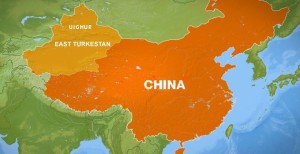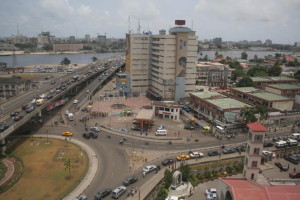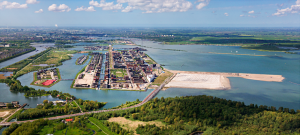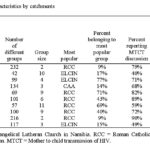Openbaar Lichaam Bonaire ~ Onderwijs
Over onderwijs
De kinderen op Bonaire volgen van hun vierde t/m hun twaalfde jaar basisonderwijs. Basisonderwijs bevordert brede vorming van kinderen. Het onderwijs richt zich op de emotionele en verstandelijke ontwikkeling, op de ontwikkeling van de creativiteit en het verwerven van sociale, culturele en lichamelijke vaardigheden. De kerndoelen zijn een operationalisering hiervan. Het geheel van samenhangende en daarom doorgenummerde kerndoelen geeft een beeld van het inhoudelijk aanbod van het basisonderwijs. De kerndoelen zijn er voor:
– Nederlands
– Engels
– Papiaments
– rekenen en wiskunde
– oriëntatie op jezelf en de wereld
– kunstzinnige oriëntatie
– bewegingsonderwijs
Zie: http://www.bonairegov.an/nl
Nieuws uit de West: het eiland Bonaire (1947)
Impressies van het eiland Bonaire. Luchtopnames zoals de hoofdplaats Kralendijk. Stadsshots en straatshots, o.a. het Gouvernementsgebouwen en de haven. Landschapsshots: droog en stoffig met metershoge cactussen; zoutwatermeren met mangroves; een kudde geiten. Strandbeelden: bergen schelpen liggen gereed voor de handel; inheemse vissers boeten netten; op sommige rotsen staan nog Indiaanse tekeningen van vroeger; de zgn. “slavenmuren” omheinen stukken grond (voormalig grondbezit van plantage-eigenaren). De rotsige noordkust: de zee loopt er met hoge golven tegen te pletter.
Nederlands Instituut voor Beeld en Geluid (YouTube kanaal)
Moladi ~ Cube Museum ~ Design For A Better World | Innovations For People
![]() Moladi invited to exhibit at the New “C-City” museum – Netherlands.
Moladi invited to exhibit at the New “C-City” museum – Netherlands.
“Due to the success we have had with the two ‘Africa is Now’ exhibitions, Design Indaba was approached to curate a segment on African design for a new exhibition taking place later this year at a new design museum called Cube , in Kerkrade in the Netherlands. The exhibition will showcase Design for a better world | Innovations for people. The objective of the exhibition is to raise an awareness of design and to pass on its significance. They aim to do this by gathering unique examples of the most relevant innovations worldwide from contributing museums such as the Cooper Hewitt in New York, Design Museum Taiwan, Powerhouse Australia, Mind Museum Manila, Design Museum London and of course, Design Indaba.”
“We wish to congratulate moladi for being selected to this prestigious exhibition!” – Design Indaba
Cube Museum Catalogue and display copy – Link
Read more: http://www.designindaba.com/articles/creative-work/pour-house
Violence And Identity ~ The “Self” And The “Other”: An Exploration Of Ethnic Relations And Conflict In China’s Xinjiang Uyghur Autonomous Region
 Abstract
Abstract
On the night of 5 July 2009, Urumchi, the provincial capital of the Xinjiang Uyghur Autonomous Region (XUAR), witnessed the worst outbreak of ethnic rioting in the history of the People’s Republic of China (Wong, 2009). According to official figures, 197 people were killed and over 2,000 injured (Xinhua, 2009a). The majority of those who died were of Han ethnicity. The Han make up over 92 per cent of the Chinese population but are in a minority in Xinjiang. Their attackers were mostly of Uyghur ethnicity, a Turkic Muslim ethnic group which is in the majority in Xinjiang. The 2009 riot was not an isolated event, but the worst in a series of sporadic outbreaks of violence in recent years. These outbreaks of violence have brought renewed focus, both within China and internationally, on the issue of ethnic relations in Xinjiang and on the Chinese government’s minority policy and have had a significant impact on the construction and maintenance of the social boundaries that exist between both groups.
Introduction
Xinjiang, which translates as “New Dominion” or “New Frontier” in English, is a vast resource-rich province twice the size of Western Europe. At just under 1.7 million square km, it makes up one sixth of the People’s Republic of China and borders Russia, Kazakhstan, MongoIia, Kyrgyzstan, Pakistan, India, Afghanistan, and Tajikistan. It is of enormous strategic and economic importance but remains, as it always has been, a potential tinderbox, as its peoples, old and new, struggle to find their place in an ever-shifting landscape. The central government is determined to secure control of this key region in the face of continuing resentment from its indigenous peoples (Bovingdon, 2010).
According to the 2010 Census (Xinjiang Statistical Year Book 2009) Uyghurs make up 45.21 per cent of the population of Xinjiang, numbering 8,345,622 people. The Han make up 40.58 per cent with 7,489,919 people. Next come the Kazakhs, who number just over 1 million, followed by: Mongol; Dongxiang; Tajik; Xibe; Manchu; Tuja; Uzbek; Russian; Miao; Tibetan; Zhuang; Daur; Tatar; and Salar. The 2000 census also shows that during the 1990s, Xinjiang’s Han population grew by 31.6 per cent, mostly due to inward migration. This is twice the rate of the indigenous ethnic groups (up 15.9 per cent), who supposedly benefit from more relaxed family planning policies compared to the rest of China. This influx has considerably heightened the competition between the Han and local ethnic groups for land and water resources in rural areas, and for jobs in urban areas. While the most recent census was carried out in 2010, the full figures on Xinjiang’s ethnic makeup had still not been released at the time of writing. The figures that have been released show the figure for the Han was hovering around the 40 per cent mark, while the Uyghur figure has fallen significantly to 42 per cent (Xinjiang Statistical Yearbook 2011).
Ethnic identity (minzu – 民族 ) in China, and in Xinjiang particularly, is both clearly defined by the state and controversial. In Xinjiang, China’s most ethnically diverse region and also its most restive, ethnicity has a particular resonance. This chapter conceptuaIizes ethnicity in Xinjiang both in terms of a classical Weberian definition of”ethnic groups” as “human groups that entertain a subjective belief in their common descent because of similarities of physical type or of customs or both, or because of memories of colonisation or both” (Weber, 1968, p. 389) and the official Communist Party interpretation of ethnicity based on Stalin’s definition of historically formed stable communities of language, territory, economic life, and psychological formation, manifested through a common culture (Stalin, 1953). It understands ethnic identity as something that is self-conscious and that this self-consciousness often has its source in the labels used by others. As Stephen Cornell and Douglas Hartman (2007) argue, the identity that others assign to us can be a powerful force in shaping our own self-concepts. Essential to this exploration of Han and Uyghur identity will be the assumption that an ethnic group cannot truly exist in isolation, it has meaning only in a context that involves others.
Based on a large number of interviews carried out in Urumchi from 2009 to 2012, this chapter is divided into two parts: part one will give a detailed account of the riots based on eye witness accounts together with contemporaneous news reports; part two seeks to examine how the violence of 2009 has affected how the Han and Uyghur see the themselves and each other and the role of social boundaries and relational comparisons in the creation and maintenance of group identities.
My research takes as a basic theoretical assumption Fredrik Barth’s (1969) conceptualization of ethnicity, which emphasizes that it is the ethnic boundary that defines a group. Barth maintained that ethnic identities do not derive from intrinsic features but emerge from, and are reasserted in, encounters, transactions, and oppositions between groups. An ethnic group can only be defined and structured from within, and only these “objective” differences considered significant by the actors themselves are taken into account. He asserts that categorical ethnic distinctions do not depend on an absence of mobility, contact, and information but do entail social processes of exclusion and inclusion. It is not so much who we are, rather, who we are not. Barth also argues that identity must be selected by groups themselves, a process he calls “self-ascription” (Barth, 1969, p.4).
Part One
Urumchi aflame: the causes and consequences of the 5 July riot
In the run-up to the 2008 Beijing Olympics, the authorities expressed concern over Uyghur separatist groups potentially plotting to disrupt the games. At the beginning of 2008, it claimed to have broken up a number of plots and to have found equipment used in the making of explosives as well as four kilograms of yell ow sulphur and 100 kilograms of nine other types of chemicals, along with computer equipment and disks containing “holy war” materials. Police claimed the suspects were planning to attack the Olympics as weIl as other government targets in Beijing and Shanghai (Hastings, 2011). In March, the authorities announced they had thwarted an attempt by Xinjiang “terrorists” to hijack a Beijing-bound passenger airplane and crash it. However, despite its heightened security operation in Xinjiang, two violent incidents in Xinjiang did overshadow the opening of the Olympics.
On 4 August, just days before the games were due to open, two men armed with knives and explosives ambushed military police who we re exercising outside their station in Kashgar. State media reported that the attackers had killed 16 officers and wounded 16 others. Days later on 9 August, 12 explosive devices were detonated in attacks on at least four local government buildings, a supermarket, and hotels in the city of Kucha, killing a security guard and at least 10 of the suspected attackers (Jacobs, 2008; Yardley, 2008). Read more
FUTURE LAGOS | Olamide Udoma ~ Interview: Working In Lagos. Making Lagos Work. (Part 1)
Olamide Udoma: What is DASUDA?
Robert van Kats: DASUDA stands for Dutch Alliance for Sustainable Urban Development in Africa. What we do is set up partnerships that find local solutions for large urban development issues via understanding and collaboration. Trying to not just discuss but also act. We work on implementing urban development solutions within things like housing, water, mobility – the big topics.
OU: Why are you in Lagos this week?
RvK: We are in Lagos preparing for a case study programme which will take place later this year in June, July or September, for two weeks. Within these two weeks a small group of local partners will work on a case study. We are yet to decide where specifically the case study will be in Lagos, but we are working on it and hopefully towards the end of the year we’ll slowly get into implementing the ideas that come from the design group. Implementation will start with a small project and be built on brick by brick. So that is why we are here – learning from Lagos but also sharing thoughts, knowledge and ideas towards an urban case study.
Read more: http://futurecapetown.comfuture-lagos-interview
Feargus O’Sullivan ~ Amsterdam’s Bold Housing Solution: 10 Artificial Islands
Right now, Amsterdam’s Center Island (Centrumeiland in Dutch) doesn’t look like much—just an inhospitable sand bar poking out from the city into the huge IJmeer Lake. But there’s far more to it than meets the eye at present. The island, in use for the first time this summer as a campsite-cum-art installation, is in fact an entirely artificial creation, lying at the heart of what could currently be Europe’s boldest engineering and housing program. This sand bar will become one of 10 new residential islands rising from the depths of the IJmeer. In a distinctively Dutch move, Amsterdam is not only planning for future expansion by building a network of model neighborhoods to expand into—it has actually constructed the ground on which those neighborhoods will stand.
Read more: http://www.citylab.com/amsterdam-bold-housing-solution




